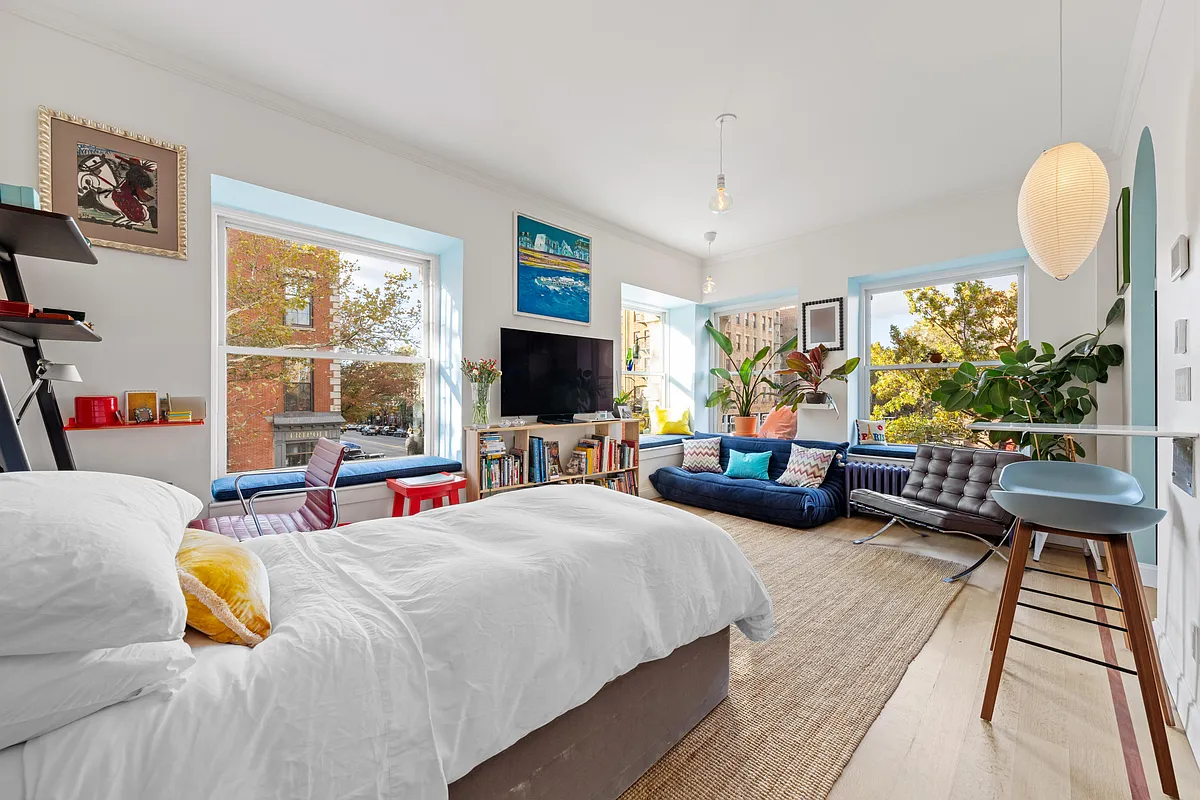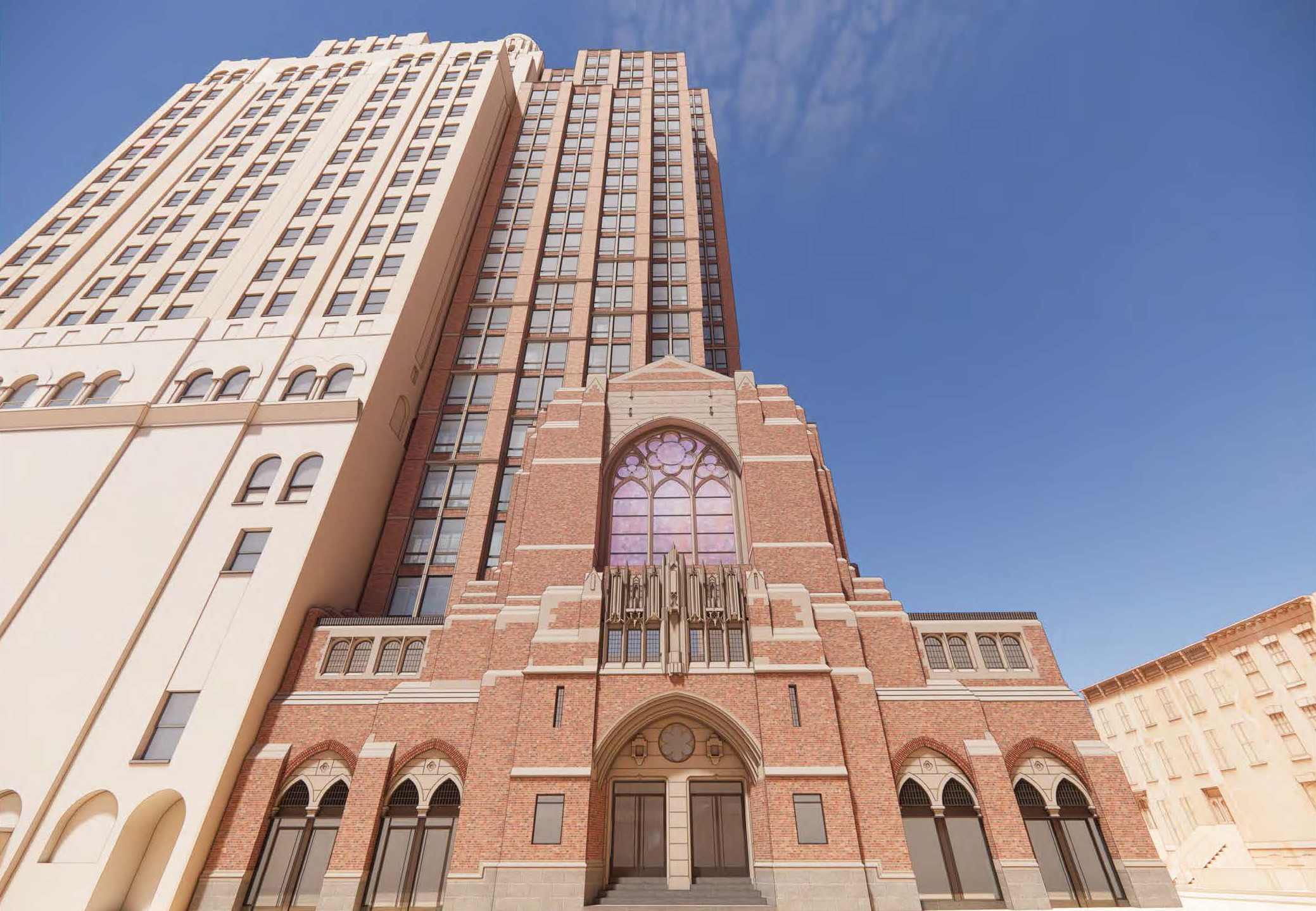News Flash: Everyone Wants to Live in the City
If you weren’t already convinced that city life is becoming increasingly preferable to suburban life, see this article in The New Republic, which looks at a trend called “demographic inversion”—a reversal of the white flight that helped hollow out the inner city beginning in the 1950s. The author quantifies what many Brooklynites already know: the…


If you weren’t already convinced that city life is becoming increasingly preferable to suburban life, see this article in The New Republic, which looks at a trend called “demographic inversion”—a reversal of the white flight that helped hollow out the inner city beginning in the 1950s. The author quantifies what many Brooklynites already know: the neighborhoods closest to vocational and cultural hubs (like, dare we say, Manhattan) and with shopping and services in walking distance are the most popular, forcing poorer folks to move further and further out. There’s been plenty of talk about the suburbs potentially turning into 21st century slums but what will 21st century cities look like if demographic inversion continues? “In the worst case, demographic inversion would result in the poor living out of sight and largely forgotten in some new kind of high-rise projects beyond the city border, with the wealthy huddled in gated enclaves in the center.”
Trading Places [The New Republic]
Beyond Gentrification [Curbed]
Photo by Daily Phototherapy.





1. I think you are focusing too much on the word “fear”. There are many means of investing that produce returns similar to a rental apartment without the headache. The question lately has been “How do we entice developers to actually build rental housing? At the moment, it’s through government subsidies.
I really don’t understand how you can possibly bring up rent stabilization again. Where has it worked?
2. Capitalist regime? What are you a marxist? The issue with nearly irrevocable leaseholds is instead of dealing with the property rights of say 3 landowners, you’re dealing with dozens or hundreds of leaseholders. The number of parties with whom you must negotiate to begin a project is increased dramatically because of rent stabilization.
As for your analysis of “socially useful” – check our communist friends in China someday. They trampled on the rights of thousands of peasants and now have thousands of high rise apartment buildings housing hundreds of thousands of people. There, development is simple. The government chooses a site and tells the people to leave or be taken away to the Outer Mongolia Province. It seems pretty efficient to me.
3. Replacement cost = the cost to build a functionally equivalent building. Reproduction cost = the cost to build an exact replica of a particular building. We aren’t talking about the interior build out necessarily, it’s mostly about the facade. Adjusting for location, there is a significant difference in price between townhouses with no facade versus those with a facade of a high quality. Your $700 a square foot number is also just plain wrong. It’s a high number surely, but more in line with a Manhattan office building. Talk to someone at Chubb – they specialize in insuring the reproduction cost of these houses. In many cases, these facades cannot be reproduced. How many new townhouses do you see with high quality facades? None. We don’t even have people skilled in these construction techniques anymore.
4. Arbitrage? Again, you are applying your knowledge of valuing financial instruments to townhouses. This is actually a real problem in economics – human behavior does not follow such economic models in reality. Appraising brownstones in prime parts of Brooklyn is like appraising art. People don’t buy townhouses in Brooklyn because they want a 4,000 square foot house next to Prospect Park. They are buying it for qualitative, not quantitative reasons. This is why modern materialistic economics fail to accurately predict human behavior and ultimately results in a sterile world. The banker or communist bureaucrat, like you, cannot quantify the value of beauty.
As for your discussion of “honest appraisers” – you are simply flat wrong. My own parents were able to pay their mortgage in the 1970s with the rent from the garden apartment. That is proof enough for me. This was quite common at one point.
Polemicist:
1. Fear of future profit-restrictions obviously could reduce investment in new building.
But the problem then is fear, not rent stabilization. Abolishing rent stabilization won’t help that, at least as long as tenants continue to have the right to vote and they continue to view monopoly pricing power as immoral and inefficient.
Actually, the best way to end *fear* of increased rent stabilization is to enact the strictest imaginable scheme right now. Then investors will just work with it instead of frightening themselves with populist fantasies.
2. The difficulty of assembling development sites is an inevitable consequence of any property-based regime. The only way to “solve” this problem is to give developers the right to expropriate others. That cure is worse than the disease. Under capitalist regimes, developers can only develop if they can persuade existing rights-holders to accept payment for their rights. If they can’t do that, then presumptively their development activities are not efficient. Stealing the rights of tenants would make development easier, but not more efficient, fairer or more socially useful.
3. It would take a significant price drop for Park Slope brownstones to sell for less than replacement cost. Renovated brownstones with details do not sell for a noticeable premium over similar sized brownstones with modern renovations. So, in the end, it seems that the marginal buyer is buying neighborhood and house and renovation, not Victoriana. Thus, modern construction costs are the point, and it is not hard to build a comparable space to this (less than pristine) brownstone for less than $700 per sq ft, as evidenced by the fact that developers are still managing to buy overpriced land/buildings and create new properties at current market prices all over our area.
4. In most suburbs, but not in brownstone Brooklyn, there is not a fully comparable rental market for upscale single family homes. Moreover, zoning often makes conversion from owner occupied to rentals or vice versa difficult. Hence the Appraiser’s rule is not irrational.
But in Bklyn, we are blessed with a deep and liquid market in many housing types and the zoning regime places few restrictions on arbitrage from one to the next. If rental and owner prices get out of whack, as they are now, rentals will continue to be converted to owner-occupied until equilibrium is restored. Pre-bubble, honest appraisers in brownstone Brooklyn always weighted rental value heavily, and post-bubble they will go back to doing so.
Biff–it was July 18th not 16th.
http://bstoner.wpengine.com/brownstoner/archives/2008/07/whos_gonna_buy.php
Thanks, Biff!
Biff, ditto and wasder, thanks for keeping the pressure on DOWhat.
Jinglemail, I beg to differ. I don’t know a whole lotta people in the burbs, but I know a few and I’ve never known a family to just own one car. As far as proximity to the rail, fine, but not so close that people actually walk. They have what they call a ‘station car’. Then while hubby’s station car or main car is parked at the station, wifey needs to go shopping. And of course once the kids hit 16, each and every one needs their own car.
My brother, who is admittedly wealthy and lives in Bedford w 2 kids, has six cars. ‘Course he says it’s cheap cuz the insurance drops with each car.
FinanceGuy:
I can tell by your lingo that while you do know something of economics, you don’t work in real estate.
You said:
“Thus, Polemicist is exactly 180 degrees off. Rent stabilization
almost certainly INCREASES development activity in the city.”
This conclusion demonstratively false via a variety of empirical observations, such as:
1) development activity has in fact slowed markedly since rent stabilization was enacted.
2) development activity has slowed considerably in every part of the country rent ceilings have been imposed.
3) price controls, regardless of product type, universally result in decreased supply of the product affect.
4) Rent ceilings are almost universally condemned for reducing the quality and quantity of housing by economics professors across the country.
Your theory misses a number of nuances:
1) You still can’t understand that developers fear the expansion of rent stabilization. I have spoken with many in my career and I can assure you this is a reality. There is a reason virtually every new large rental building participates in the 80/20 program or something similar.
2) You don’t acknowledge how rent ceilings work: they must guarantee an unlimited right of renewal. It is incredibly difficult and expensive to evict rent stabilized tenants to assemble a development site. This makes it unnecessarily expensive to replace obsolete housing with higher density buildings. This is actually more of an issue in the boroughs where the stabilized rent doesn’t differ much from the market rent. It still reduces development because smaller buildings can’t be knocked down with ease.
As for the rest of your post regarding brownstones and what not – the reproduction cost of most every townhouse is far greater than market value. For luxury products such as this, your theories based on replacement cost are irrelevant. People are not buying these houses for the walls and frame. They are buying it for its unique aesthetic attributes that appeal to them personally. While you have some knowledge of appraisal methodology, you should know that the Appraisal Institute itself does not recommend valuing single family homes based on their potential income.
Just to make clear, I believe rent stabilization is less of a factor in the housing crisis than the zoning laws.
fsrg, DOWhat’s best lines are those he snorts and those he cuts and pastes. He has already shown a complete lack of intellectual honesty. And when asked a legitimate question, he either ignores it or provides some gibberish that doesn’t address the point.
Now take a gander at another link and DOW’s two posts and tell me he and the What don’t have the exact same style of posting.
http://bstoner.wpengine.com/brownstoner/archives/2008/07/whens_the_hoove.php#comments
i have to give many on here credit for trying to be civil in this conversation. commentary on this tends to be very lopsided. owners have a vested interest in believing that everyone within 50 square miles will be so swamped with gas prices that it will make economic sense for them to buy a house that costs twice as much as their suburban place (plus private school).
one glaring omission from that argument is that most nyc suburbs are on excellent train lines. so you don’t have to own two cars and you don’t have to drive much except for groceries etc. i live in park slope and own 1 car. sure, i probably drive less than i would if i lived in the suburbs, but not that much less. there is a huge difference between ohio suburbs and nyc suburbs. so these arguments just strike me as hollow. sure, the affluent will probably continue to move into nyc/brooklyn. but that is a luxury move, not one of necessity. the cost of ownership is lower and declining in the nyc suburbs. this will attract new residents no matter what you think or hope.
ENY -what the 12:46 post effectively demonstrates is the importance of context – without putting something into relevant context – it effectively has no meaning – which more ore less sums up ‘The What’ and all others who want their answers tied up in simple little packages.
Since my quote had ZERO to do with the financial market/economic conditions – putting it up against a dozen quotes (of whose authenticity I dont even care to research), that are apparently examples of incorrect past predictions of financial markets/economy – shows nothing other then the total lack of reading comprehension (or intellectual dishonesty) of The What (and all his alter egos).